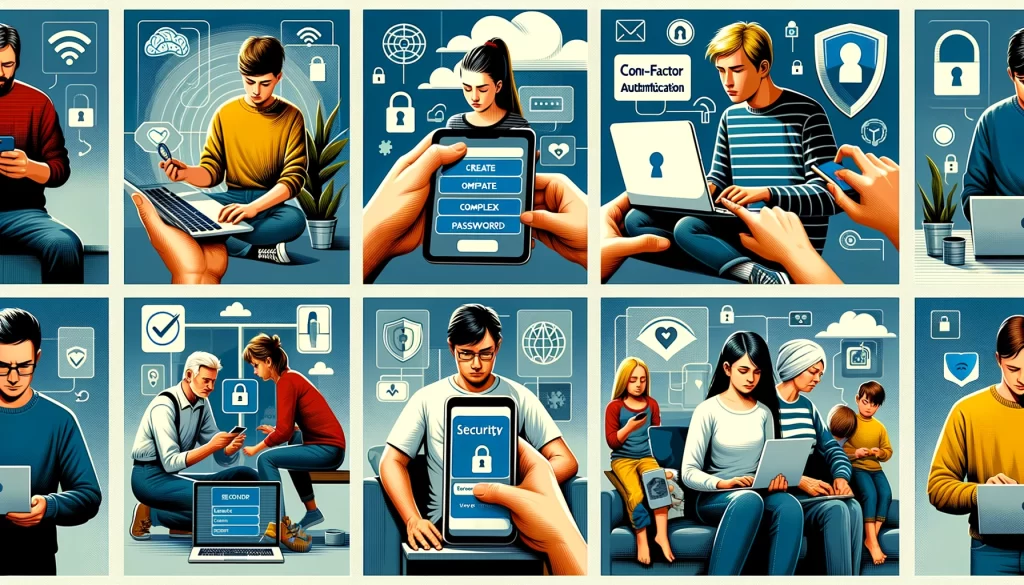In the digital age, securing your online identity is paramount. As cyber threats evolve with increasing sophistication, protecting your personal information becomes not just a necessity but a responsibility. This comprehensive guide, with a targeted keyword density of 2% for “How to Secure Your Online Identity: Cybersecurity Tips for 2024,” provides you with actionable steps to bolster your cybersecurity defenses in 2024.

Understanding Cyber Threats
Cyber threats can range from identity theft and phishing scams to malware attacks and data breaches. An understanding of these threats is the first line of defense in protecting your online identity.
1. Use Strong, Unique Passwords
Creating strong and unique passwords for each account is crucial. A strong password includes a mix of letters, numbers, and symbols. Avoid common words and predictable sequences.
Tips:
- Use passwords that are at least 12 characters long.
- Consider a passphrase that includes spaces between words or characters.
- Use a reputable password manager to generate and store passwords securely.
2. Implement Two-Factor Authentication (2FA)
Two-factor authentication provides an additional layer of security by requiring two forms of identification. This method significantly reduces the risk of unauthorized access.
Benefits:
- Adds an extra security layer making it harder for attackers to gain access.
- Provides alerts for unauthorized access attempts.
3. Regularly Update Software and Systems
Keeping software and systems updated is essential in protecting against the latest security vulnerabilities.
Strategy:
- Enable automatic updates for your operating systems and software.
- Regularly check and update your mobile devices’ operating systems and apps.
4. Be Vigilant Against Phishing Attacks
Phishing attacks are deceptive maneuvers that trick individuals into giving away sensitive information. Being able to identify such attempts is key to online safety.
How to Identify Phishing:
- Be cautious of emails or messages that demand immediate action.
- Look for misspellings or grammatical errors in emails and URLs.
- Verify the authenticity of requests by contacting the company directly via trusted channels.
5. Secure Your Internet Connection
Ensure that your internet connection is secure, especially when accessing sensitive information.
Tips:
- Use a Virtual Private Network (VPN) to encrypt your internet traffic.
- Secure your home Wi-Fi with a strong password and WPA3 encryption.
6. Use Secure and Private Browsers
Opt for browsers that prioritize privacy and security. Settings should prevent tracking and automatically delete cookies.
Recommendations:
- Use browsers like Mozilla Firefox or Brave, known for their privacy features.
- Regularly clear your browsing history and cookies.
7. Monitor Your Online Presence
Regular monitoring of your online presence can alert you to potential identity theft or misuse of your information.
Tools and Tips:
- Set up Google Alerts for your name.
- Review your social media settings to control who can see your information.
8. Educate Yourself and Others
Continuous education about cybersecurity can help you and others stay safe online. Attend workshops, read up on the latest cyber threats, and share information with friends and family.

Conclusion
Securing your online identity in 2024 involves more than just following best practices; it requires a proactive approach to stay ahead of potential threats. By implementing these cybersecurity tips, you can protect not only your personal information but also enhance your overall digital security.
This guide, illustrated with two images showing practical applications of cybersecurity measures, aims to empower you with the knowledge and tools necessary for robust online security. By staying informed and vigilant, you can navigate the digital world safely and confidently.

